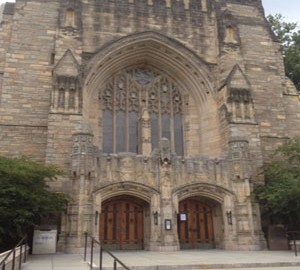2019 Admission Rates at Top-Tier Institutions
Colleges and universities have been releasing results for their regular decision admissions round since mid-March, and it’s clearly been another in a series of increasingly competitive years for applicants at most top-tier institutions. Admission rates are at historic lows at some of the country’s most highly selective.
Admission rates are an imperfect measure of the quality of an institution, but they have become a proxy for academic excellence as perceived by many families when it comes time to compare schools. One reason is that admission rates have an oversized impact on the calculations used to rank schools in such periodicals as U.S. News & World Reports, Money, and Forbes. Therefore, over time, admission rates have become a driver of demand for an education at elite institutions.
The fact that a school attracts many applicants who know that only a small percentage will be accepted is an indication of the power of a school’s brand. Its admissions rate is the prime generator of prestige when comparisons to peer institutions are made. This is not only true for Ivy League schools and “near-Ivies” like MIT, Stanford, and Chicago, but for all top-tier private and public colleges and universities.
Table A, below, shows the Class of 2023 results for those elite institutions that have reported at least some of their admissions data as of the writing of this post. The University of California will not report 2019 admissions information for its branches until June 1.
Table A: Admissions Results for 2019 and 2018
Ivy League and Other Elite Institutions
| Institution | Applicants
2019 |
Admit
2019 |
Admits
% 2019 |
Applicants
2018 |
Admits
2018 |
Admit
% 2018 |
| Amherst | 10,567 | 1,144 | 11 | 9,722 | 1,224 | 13 |
| Barnard | 9,319 | 1,051 | 11 | 7,897 | 1,088 | 14 |
| Boston College | 35,300 | 9,500 | 27 | 31,000 | 8,400 | 27 |
| Boston University | 62,210 | 11,260 | 18 | 64,473 | 14,184 | 22 |
| Bowdoin | 9,332 | 831 | 9 | 9,081 | 935 | 10 |
| Brown | 38,364 | 2,551 | 7 | 35,438 | 2,567 | 7 |
| Carnegie Mellon | 24,351 | |||||
| Chicago | 35,000 | 2,065 | 6 | |||
| Colby | 13,534 | 1,295 | 10 | 12,313 | 1,601 | 13 |
| Colorado College | 8,552 | 1,283 | 14 | 15 | ||
| Columbia | 42,569 | 2,190 | 5 | 40,203 | 2,214 | 6 |
| Cornell | 49,118 | 5,183 | 11 | 51,328 | 5,288 | 10 |
| Dartmouth | 23,650 | 1,868 | 8 | 22,033 | 1,925 | 9 |
| Duke | 41,613 | 2,983 | 7 | 37,302 | 3,097 | 8 |
| Emory | 30,017 | 4,512 | 15 | 27,982 | 5,103 | 18 |
| Emory (Oxford) | 17,500 | 3,432 | 20 | 16,230 | 4,144 | 26 |
| Georgetown | 22,788 | 3,202 | 14 | 22,897 | 3,237 | 15 |
| Georgia Tech | 36,936 | 7,000 | 19 | 35,600 | 7,832 | 22 |
| Hamilton | 8,338 | 1,334 | 16 | 6,238 | ||
| Harvard | 43,330 | 1,950 | 5 | 42,749 | 1,962 | 5 |
| Harvey Mudd | 4,045 | 544 | 13 | 4,101 | 594 | 14 |
| Haverford | 4,938 | 801 | 16 | 4,682 | 877 | 19 |
| Johns Hopkins | 32,231 | 2,950 | 9 | 29,128 | 2,894 | 10 |
| Middlebury | 9,750 | 1,547 | 16 | 9,230 | 1,696 | 18 |
| MIT | 21,312 | 1,410 | 7 | 21,708 | 1,464 | 7 |
| NYU | 76,919 | 12,307 | 16 | 75,037 | 15,722 | 19 |
| UNC – Chapel Hill | 44,784 | 43,384 | 4,205 | 10 | ||
| Notre Dame | 22,200 | 3,410 | 15 | 20,370 | 3,586 | 18 |
| Northeastern | 62,000 | 11.160 | 18 | 62,000 | 11,780 | 19 |
| Northwestern | 40,579 | 3,612 | 9 | 40,425 | 3,392 | 8 |
| Pomona | 726 | 10,245 | 707 | 7 | ||
| Princeton | 32,804 | 1,895 | 6 | 35,370 | 1,941 | 5 |
| Stanford | 2,057 | 47,450 | 2,040 | 4 | ||
| Swarthmore | 11,400 | 995 | 9 | 10,749 | 980 | 9 |
| Tufts | 22,766 | 3,324 | 15 | 21,502 | 3,139 | 15 |
| UC – Berkeley | 87,353 | 89,294 | 13,483 | 30 | ||
| UC – Davis | 78,063 | 77,727 | 32,179 | 41 | ||
| UC – Irvine | 95,556 | 94,866 | 27,344 | 29 | ||
| UC – Los Angeles | 111,266 | 113,409 | 16,020 | 14 | ||
| UC – San Diego | 99,112 | 97,899 | 29,577 | 30 | ||
| UC – Santa Barbara | 93,423 | 92,017 | 29,782 | 32 | ||
| U of Pennsylvania | 44,960 | 3,345 | 7 | 44,482 | 3,371 | 8 |
| USC | 66,000 | 7,250 | 11 | 64,256 | 8,258 | 13 |
| Virginia | 40,869 | 9,725 | 24 | 37,222 | 9,850 | 26 |
| Vanderbilt | 32,967 | 2,088 | 6 | 30,146 | 2,199 | 7 |
| Vassar | 8,961 | 2,098 | 23 | 8,312 | 1,996 | 24 |
| Washington USTL | 25,400 | 3,556 | 14 | 31,300 | 4,695 | 15 |
| Wellesley | 6,488 | 1,298 | 20 | 6,670 | 1,267 | 19 |
| Wesleyan | 13,358 | 2,114 | 16 | 12,788 | ||
| Williams | 9,715 | 1,206 | 12 | 9,559 | 1,163 | 12 |
| William & Mary | 14,670 | 5,000 | 34 | |||
| Yale | 36,843 | 2,176 | 6 | 35,306 | 2,229 | 6 |
The school with the largest point decline in admission rate from 2018 to 2019 was at Emory (Oxford), which fell from 26% in 2018 to 20% this year. Institutions with noteworthy declines in percentage drops include Boston University with an 18% drop, Colby with 23%, Haverford with 16%, NYU with 16%, Notre Dame with 17%, and USC with an 18% decline.
Not so long ago, there were no schools with an admissions rate below 10%. However, in recent years, the “10% or Less Club” has grown every year. This year’s club set a record at 17 members. It incudes Bowdoin at 9%, Brown 7%, Chicago 6%, Columbia 5%, Dartmouth 8%, Duke 7%, Harvard 5%, Johns Hopkins 9%, MIT 7%, Northwestern 9%, Princeton 6%, Swarthmore 9%, UPenn 7%, Vanderbilt 6%, and Yale 6%. Neither Stanford nor Pomona reported an admission rate for 2019 but the former disclosed that it admitted 2,057 applicants and the latter reported 726, about the same as last year in both cases, so we can assume that their rates were 5% and 7%, respectively. There were also a few near misses reporting a rate of 11%, including Amherst, Barnard, Cornell, and USC. Many of the schools named above set all-time school records for low admissions in 2019.
As we’ve noted, you shouldn’t rely too heavily on comparative admissions rates in selecting schools to which to apply. It’s only a single facet of a comprehensive portrait of a school. Your IvySelect college admissions consultant will work with you to develop a balanced list of 12 or 13 institutions that fit your unique set of needs, preferences, talents, and objectives. This list may include several of the most exclusive schools in the country, but, if so, they will not have been targeted solely for their prestigious brand. They’ll be chosen for the extent to which they satisfy your personal requirements.





